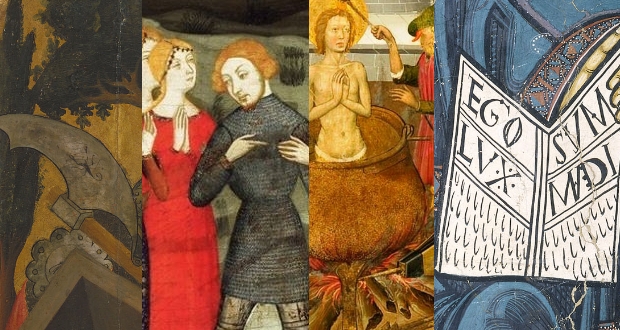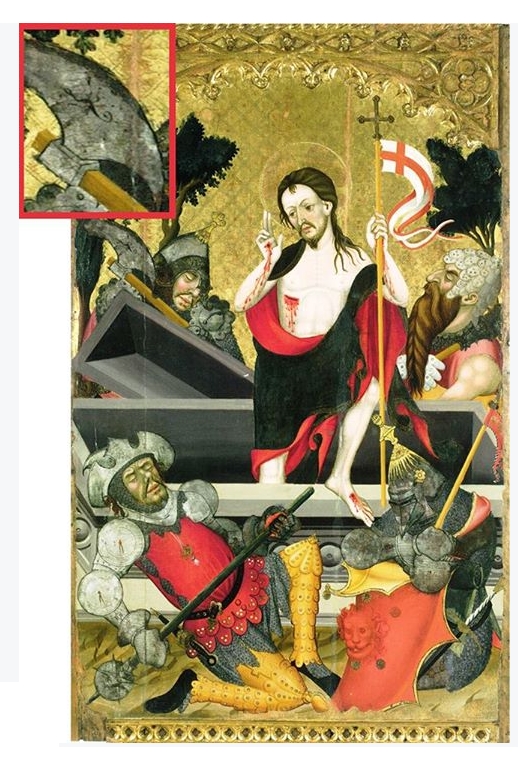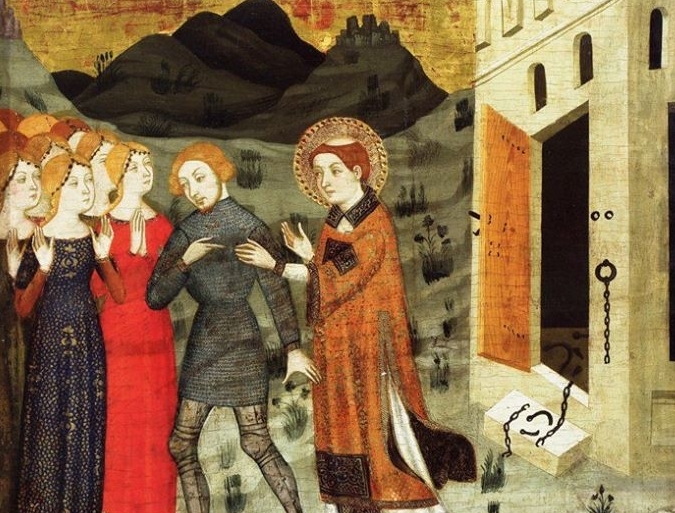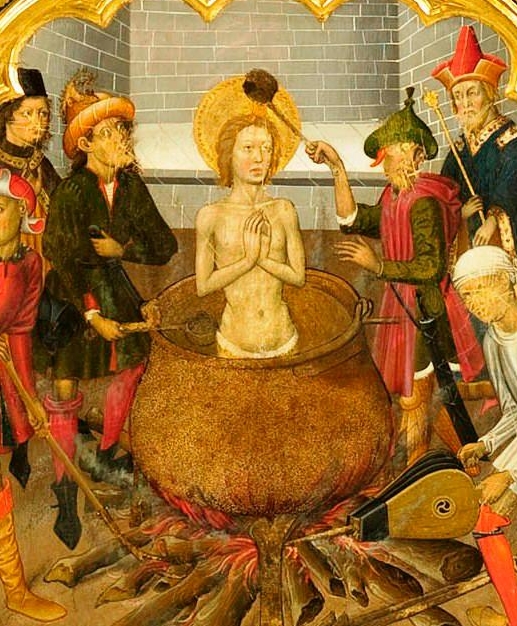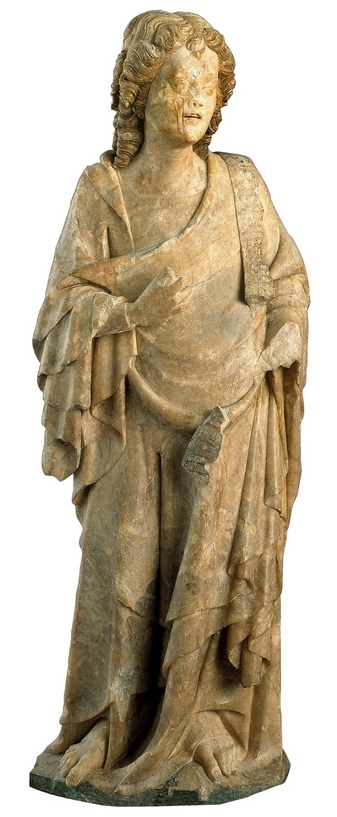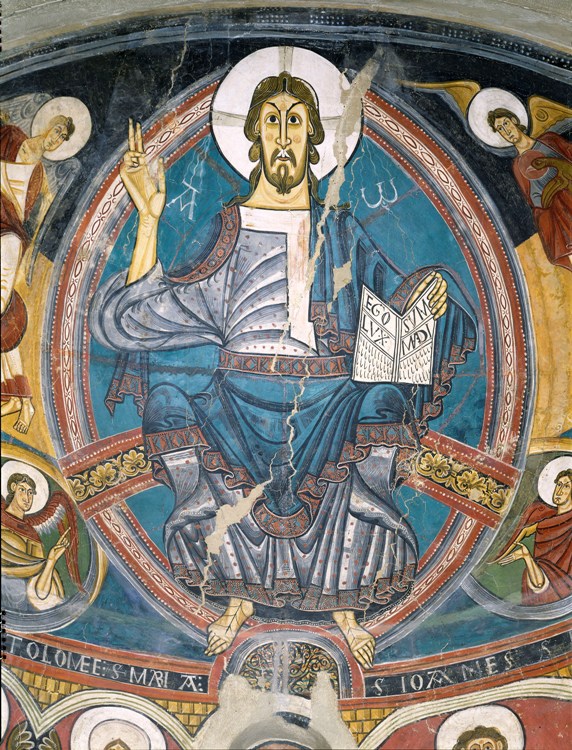With this post we continue the series Curiosities of the collection. The first article was about Modern Art and the second, Renaissance and Baroque.
Hidden messages
Here we see the Resurrection of Christ on the Gothic high altarpiece from the monastery of Santes Creus. At first sight there is nothing unusual about this painting: Christ emerges victorious from the tomb, around which the members of the Roman guard lie sleeping.
One tiny detail, however, adds new content to the scene. If you look closely, on the axe of one of the soldiers you will see a small scorpion depicted. It is not there by accident: in that period the scorpion was a symbol associated with the Jews and Judaism, so its inclusion in this painting is a sly allusion to the Jews’ involvement in the death of Christ.
Maidens and warriors
The legend of Galceran de Pinós and the ransom of the hundred young maidens is one of the many exciting stories told in the works in the Gothic art collection.
Galceran de Pinós, the admiral of the Count of Barcelona’s fleet, was imprisoned during the siege of the city of Almeria (1147) and for his ransom the Moorish king demanded that money, cattle and a hundred young virgins be handed over to him. The exchange never took place however because Saint Stephen freed Galceran from prison.
Don’t miss how, very synthetically, Jaume Serra painted this story in one of the compartments on the altarpiece of Saint Stephen from Gualter.
Attacks caused by piety
If you stroll around the Gothic art rooms you will realize something surprising. In quite a few paintings the faces of the evil figures have been attacked; this was done mainly by scratching or gouging with a sharp pointed object. They are old attacks or acts of vandalism, perpetrated by believers moved by their devotion, evidence of the direct “interaction” of the public with the images.
In the “Martyrdom of Saint John the Evangelist in the Cauldron of Boiling Oil”, by Bernat Martorell, all those responsible for the torture, the Emperor Domitian and his five lackeys, have gone from being executioners to victims of pious fury.
Faded images
In many of the Gothic sculptures in the museum we see only the bare stone, monochrome and devoid of all decoration. However, the majority of them were originally painted and gilded, totally or in part, and the colours have faded due to the action of time or man.
This magnificent carving by Bartomeu de Rubió is a paradigmatic case. Although at first sight it looks like a bare alabaster image, traces of polychromy have been conserved that tell us it was once generously painted and gilded
Did you know that the words “EGO SUM LUX MUNDI [I am the light of the world]” announced by Christ in Majesty are from the Gospel According to Saint John?
The light is interpreted as the Word, the giver of life and the origin of all things. It is also the word of the prophets that has enlightened the apostles, the truth that knowledge of God reveals to us.
A six-year-old girl learned all this and more when, in answer to her teacher’s question “What does the gesture that Christ is making with his right hand mean?” she answered without hesitation: “This gentleman is telling us that he has three books.”
Do you know any other similar curious facts about our collection?
Related links
Curiosities of the Modern Art Collection, Museu Nacional d’Art de Catalunya
Medieval Gothic Art Collection, Museu Nacional d’Art de Catalunya
Collection History, Museu Nacional d’Art de Catalunya

